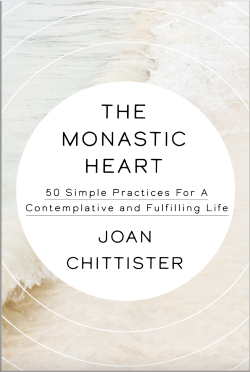On the Feast of Saint Benedict
Written in the sixth century, the Rule of Benedict is the oldest document in the Western world on the structure  and purpose of religious life and its search for God. It presents both a defined spirituality and a way of life to make it real rather than simply a poetic presentation of a fanciful vision.
and purpose of religious life and its search for God. It presents both a defined spirituality and a way of life to make it real rather than simply a poetic presentation of a fanciful vision.
There are few institutions that did as much for any geographic region as Benedictine monasteries did for Europe across the centuries. They brought a Rule and a way of life that was balanced, ordered, realistic and, most of all, humane. This was a Rule, a monastic lifestyle, that could be trusted to build community that fed the people, educated them, healed them, even protected them in their round towers in case of siege.
Monasticism restored the society around it, by first developing a corps of spiritual seekers, monastics, who were strong of heart themselves, in touch with the spirit of God within them, and open to dealing with the needs of those around them. They were strong of soul enough then to carry the world around them as well as their own lives and future.
Benedict’s model of a holy life, a peaceful life, and a productive life became a single model of organized religious life until the twelfth century.
Benedict of Nursia, a young man who was himself disillusioned and disturbed by the corrupt society of his day, developed cenobitic monasticism—communal monasticism—as an antidote to inequality, narcissism, injustice, classism, and oppression. In his communities the monastics lived in stable groups, supported themselves, and carried on an ordered life of prayer, work, and community under the guidance of the Rule and an Abbot or Abbess/Prioress.
Four major characteristics marked the new order then and mark it still. Hospitality, productivity, community, and immersion in God gave Benedictines what no other religious groups of the time could provide. They were stable. They were agents of social change. They lived a communal—a family—life. They had one major commitment: “To Seek God.” Not only was God the center of their personal lives but God was also the center of the community life itself. Benedictine lives were a model for all the world to see—and come to expect. Why? Because it was socially productive and self-sustaining, internally well-organized, and spiritually rich. Benedictine monasteries were at the center of every village and fast becoming assets to the larger society. Monastic communities became the hospices, the hospitals, the educators, the scriptoriums, the public mediators, and the judicial systems of the village square. Finally, of course, the monasteries became the spiritual centers of the local communities as well.
—from The Monastic Heart: 50 Simple Practices for a Contemplative and Fulfilling Life by Joan Chittister(Convergent)
